How To Develop An Effective Content Distribution Strategy? – 10 steps
You can create the best content marketing strategy on earth, but if you neglect to choose the right distribution channels your customers use or release content at the wrong time, your efforts will be wasted. Having a well-thought-out content distribution strategy will make it easier to reach customers who really need your offer and scale your company’s ROI.
From this article, you’ll learn:
- What is a content distribution strategy, and why do you need one?
- How do you develop an effective content distribution strategy in 10 steps?
- What are the most popular content distribution channels?
- What content distribution tools and platforms should you use to skyrocket your efforts?
In the wake of the pandemic, the consumption of digital content surged by an impressive 207%, indicating a substantial shift in how people interact with online media. This means you need to adjust your content marketing activities to current trends. The best solution is to develop a content distribution strategy.
What is a Content Distribution Strategy?
A solid content distribution strategy is an irreplaceable element of content marketing. It’s pivotal in deciding when and where your content will be presented (e.g., twice a week on your website and social media channels).
Why is a Content Distribution Strategy the Key in the E-commerce and Service Sectors?
A well-prepared content distribution strategy is crucial because:
- Increases users’ engagement – By disseminating content through carefully chosen channels, you cater to the preferences of your target audience, fostering active engagement. Engaged users are more likely to spend time on your platform, understand your product offerings, and become repeat customers;
- Maximizes your brand’s visibility – A strategic approach to content distribution ensures that your brand message reaches a broader audience. It elevates your brand above the competition, increasing mindshare and, ultimately, market share;
- Generates hot leads – Based on a CMI study, content marketing proves to be highly effective, generating three times as many leads as traditional outbound marketing, all the while being remarkably cost-efficient, with a 62% reduction in expenses;
- Helps in successfully launching a new product – Distributing content about a new product can build anticipation and demand. By creating buzz through strategic channels, your product launch can gain momentum, ensuring a successful introduction to the market;
- Scales ROI (Return On Investment) – Effective content distribution contributes directly to a better return on investment. When content is crafted and distributed strategically, it resonates with the audience, leading to higher conversion rates and increased customer lifetime value.
Effective Content Distribution Strategy – How Can You Create in 10 Steps?
Key steps that help you develop an effective content distribution strategy:
STEP 1: Choose your audience
This step requires you to spend the most time creating your ideal potential customer – the buyer persona. An ignored audience targeting will result in a complete waste of your efforts for the next steps.
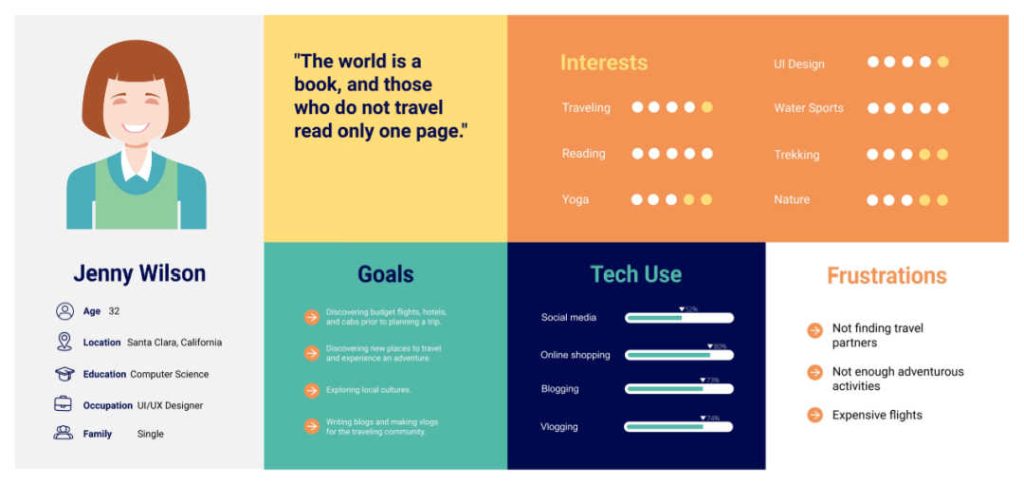
By wisely choosing the potential buyers, you may:
- Arouse greater interest in the content,
- Get more customers,
- And scale the ROI.
Otherwise, people will be angry that they see your content, translating into a high bounce rate and lack of conversions.
STEP 2: Perform an audit of your existing content
When you define your target audience, the rest will be easy. So, what should you take care of?
- Check whether your content fits your potential buyers’ needs. Consider topics you may have missed and what additional content marketing channels can be worth.
- Select the content that requires updating. Pay attention to adding internal links, valuable infographics, and statistics (not older than 2 years). Based on the competitors’ research, add substantive content that will distinguish your brand from the competition.
- Find your winning types of content. Choose the most famous social media posts and blog entries to see what made them successful. List the pros and cons, and then try to create similar content on specific topics in various brand channels.
Semrush statistics demonstrate that many marketers have benefited from content updates. Specifically, 53% have reported increased engagement, while 49% have seen improvements in their website’s traffic and rankings.
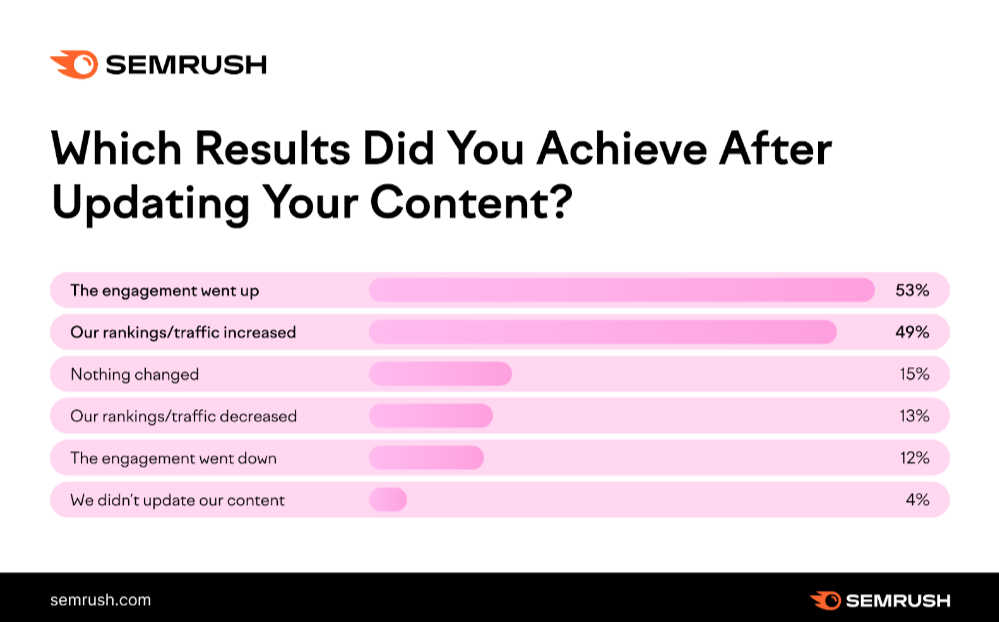
Content audit – Semrush statistics. Source: www.semrush.com/blog/content-audit-for-content-marketing-strategy/
Check EverEffect content marketing services, and perform an audit of your existing content with our help!
STEP 3: Set specific goals
It would be best if you precisely defined what you want to achieve through your content, considering the needs and behaviors of your target audience. Here’s how you can forge ahead with your goal-setting:
- Increase brand awareness – If your target audience isn’t fully aware of your brand, set goals related to content reach and impressions. You might aim to increase website traffic by a certain percentage or grow your followers on various social media platforms (you can use paid media advertisement or other owned media channels);
- Boost engagement – For an audience familiar with your brand but not actively engaging, you might set goals around boosting interactions. The number of shares and comments can quantify likes on social media posts and the number of user-generated content pieces related to your brand;

Engagement content with the educational infographic from the Decathlon Facebook Fanpage.
- Drive lead generation – If your content is meant to attract potential customers, define clear lead generation targets. These could include the number of new sign-ups for a webinar, subscriptions to a newsletter, or downloads of a white paper or e-book;
- Enhance conversion rates – Perhaps your content’s primary role is to convert prospects into customers. Set goals for improving conversion rates from specific pieces of content, whether that’s through gated content, free trials, or direct product promotions;
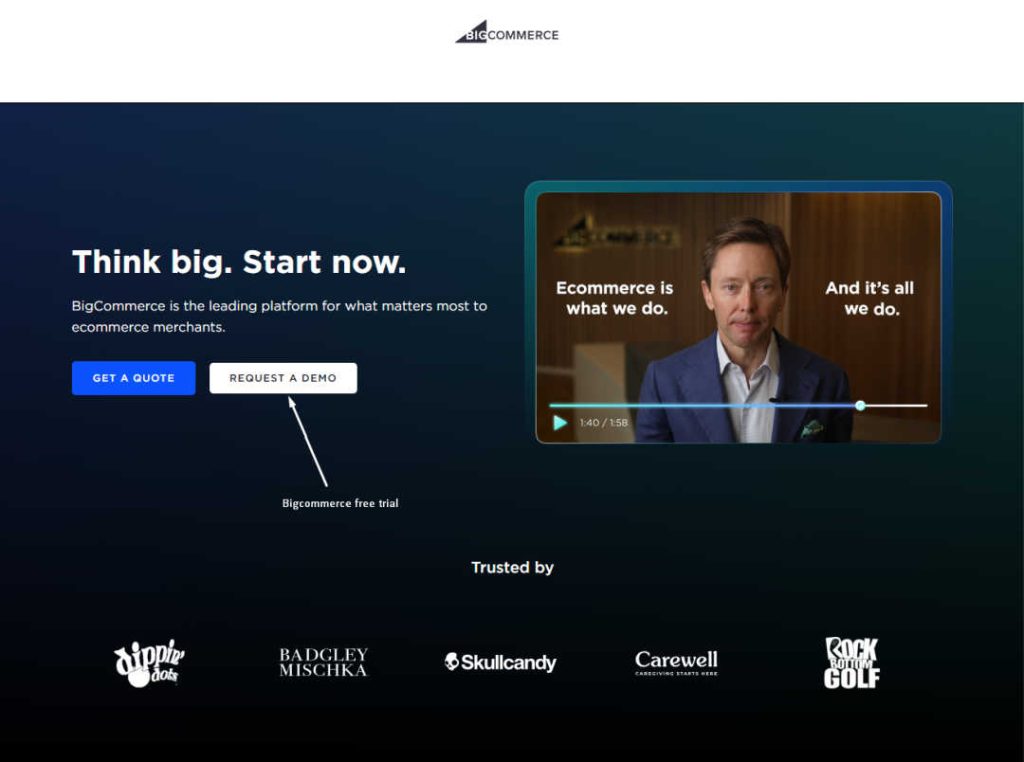
Bigcommerce free trial.
- Increase customer loyalty and retention – If your target is existing customers, your content should aim to keep them engaged and invested in your brand. Set goals around content that educates customers about advanced product features, loyalty programs, or community-building activities;
- Educate your audience – In scenarios where your product or service requires a steep learning curve, set educational goals. Measure the success through the number of users completing online courses, viewing educational content, or attending knowledge-based webinars;
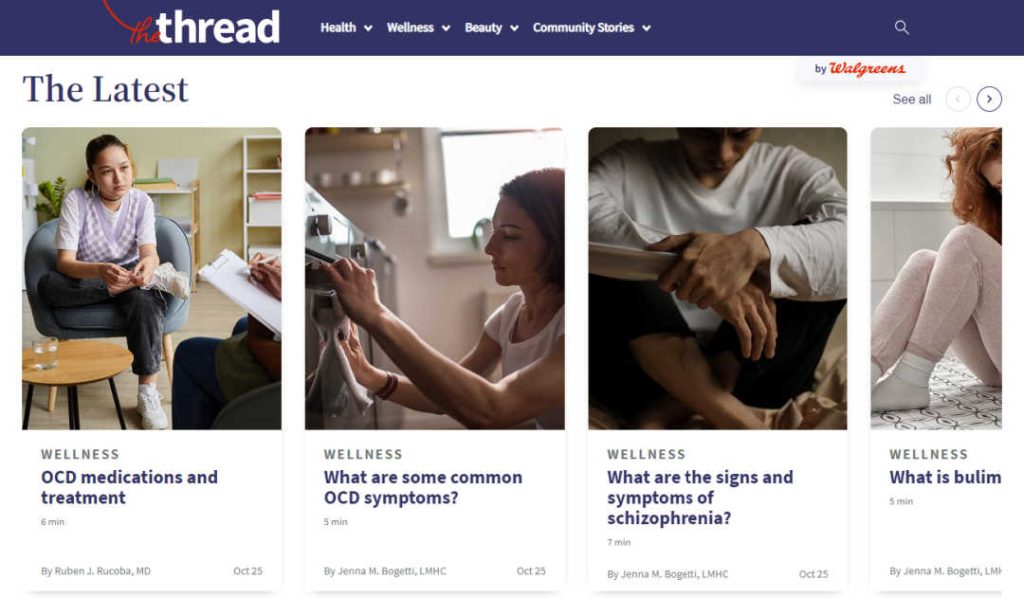
Educational blog content influencing buyer decisions. Source: https://blog.walgreens.com/wellness/mental-health.html
- Upsell/cross-sell products – Define goals related to the strategic positioning of content that introduces additional, complementary, or premium products to current customers. Track metrics like the uptake of product recommendations or increased AOV (Average Order Value);
- Foster community growth – When building a community is vital, set goals around increasing active members in your community forums, social media groups, or branded content distribution platforms;
- Improve SEO performance – Search engine optimization is for long-term visibility, set targets for ranking certain keywords, improving backlink profiles, or enhancing organic search visibility for your cornerstone content;
- Thought leadership – While positioning yourself as an expert is a goal, measure the number of guest posts placed, speaking engagements obtained, or references made by other industry leaders to your content.
STEP 4: Stand important KPIs to measure
As you hone your content distribution strategy, it’s vital to pinpoint key performance indicators (KPIs) that align with your defined goals. These KPIs will act as your navigational beacons, offering tangible metrics to assess the efficacy of your content marketing efforts.
What do you need to do?
- Identify lead KPIs – If lead generation is your objective, your KPIs should encompass lead quantity, lead quality, and conversion rate from lead to customer;
- Engagement metrics – Should engagement boost be your aim, track shares, comments, likes, and average time spent on your content;
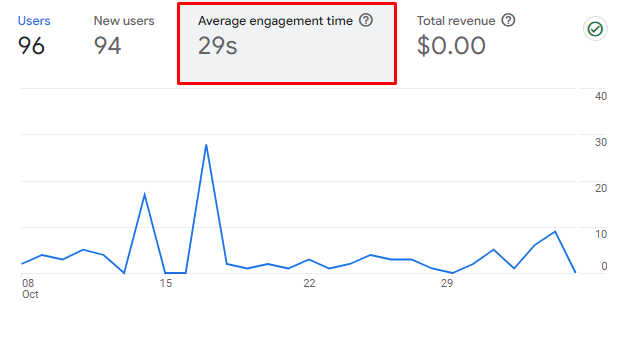
Average engagement time – insights from GA4.
- Traffic analysis – For brand awareness and SEO goals, monitor unique page visits, bounce rate, click-through rate (CTR), and the percentage of traffic from organic search;
- Revenue-related KPIs – When content is intended to drive sales, focus on tracking revenue per lead, customer lifetime value (CLTV), and return on investment (ROI) from content marketing;
- Loyalty measures – For objectives surrounding customer retention, consider repeat purchase rate, customer satisfaction scores (CSAT), net promoter score (NPS), and retention rate;
- Community engagement – In community growth scenarios, measure active participation rates, new member growth, and engagement levels within community forums or social content distribution platforms;
- Content performance indicators – To assess the performance of the content itself, look at download numbers for gated content, user interaction with interactive elements, and heatmaps of user activity on your pages;
- SEO success metrics – For goals centered on search engine optimization, track keyword rankings, domain authority, organic traffic growth, and backlink acquisition rate.

SEO success metrics in the Search Engine Results Pages from the Ubersuggest tool.
Each KPI should be SMART: Specific, Measurable, Achievable, Relevant, and Time-bound.
Ensure that you have the tools and processes in place to track these metrics accurately. Utilize web analytics platforms, CRM software, and marketing automation tools to collect and analyze data. Your findings will inform iterative improvements, enabling you to refine your strategy continuously for maximum impact.
“KPIs aren’t just numbers; they reflect your strategic progress and market resonance.” – Chris Bross, Partner at EverEffect.
STEP 5: Pick important content distribution channels for your business
Determining the optimal content distribution channel (or channels) is critical to the success of your content strategy.
As you delve into this process, consider where your target audience congregates and consumes content. Leverage analytics to understand their online behaviors and preferences; this data will guide your selection.
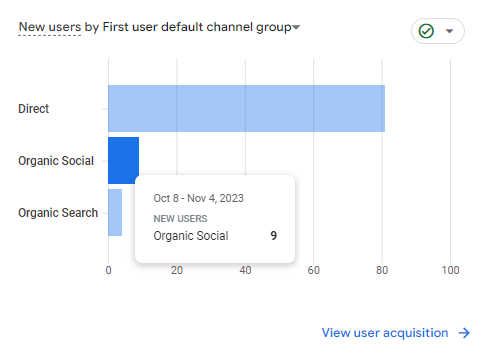
Google Analytics 4 report – content marketing channels where new users come from.
It’s vital to differentiate between owned, earned, and paid channels—each serves a unique purpose in your content distribution strategy mix. For instance:
- Owned channels, such as your website and email lists, offer control and direct engagement with your audience.
- Earned channels, like media mentions and guest posts, build authority and extend reach.
- Paid channels provide immediate visibility and target specific segments.
Remember that each channel should merge into an integrated approach, aligning with your overarching marketing objectives. In the upcoming discourse, we’ll dissect these channels to distill their core attributes and tactical applications, optimizing their utility in your strategy.
STEP 6: Determine the types of content
In constructing your content distribution plan, you must discern the content types that will resonate with your audience and fulfill your strategic goals. Analyze the customer journey, recognizing that different formats may serve other purposes at each stage—from awareness through conversion to loyalty.
From various types of content, you can choose a.o.:
- Infographics and blog posts – can illuminate complex subjects, while case studies and whitepapers showcase depth and thought leadership.
- Video content – often yields high engagement, catering to preferences for dynamic, digestible media formats.
- Interactive content, like quizzes and calculators – can drive participation and data collection.
- Podcasts – cater to mobile and multitasking audiences, offering an intimate, on-the-go connection.
You must also consider user-generated content, which can bolster trust and community engagement.

User-generated content from the official Sephora community. Source: www.community.sephora.com
STEP 7: Schedule publication deadlines
We recommend publishing content often on popular channels in your industry, e.g., social media or organic distribution channels. It also depends on your potential buyer’s needs, but from our point of view, you should publish content:
- In your main channels from 3 to 4 times weekly (e.g., on your blog and Facebook Fanpage);
- In your side channels, at least once or twice weekly (e.g., Reddit, LinkedIn, or Quora).
Want a social media editorial calendar and scheduler? Try Hootsuite or Social Champ.
STEP 8: Execute your plan
Commence execution of your content distribution plan precisely, ensuring each piece of content aligns with your strategic schedule and channels of choice. Deploy automation tools for consistent and timely posting, but also engage personally, as direct interaction is paramount. Monitor the initial performance closely to gauge audience response and system functionality. Ensure your team understands their roles and responsibilities, maintaining a workflow that promotes accountability and efficiency.
Remember!
Maintain agility, ready to pivot or adjust tactics in real-time as you learn from the early data influx, keeping your strategy dynamic and responsive.
STEP 9: Track results
Once your content is live, rigorously track performance against your established KPIs. Utilize analytics tools to collect data on engagement, reach, conversions, and other relevant metrics. Scrutinize the data for patterns and insights, identifying not just successes but also opportunities for improvement.
Stay vigilant to the metrics that matter, avoiding vanity metrics that don’t correlate with your strategic goals. This continuous monitoring loop will inform your understanding of content efficacy, guiding strategic adjustments and fueling data-driven decision-making.
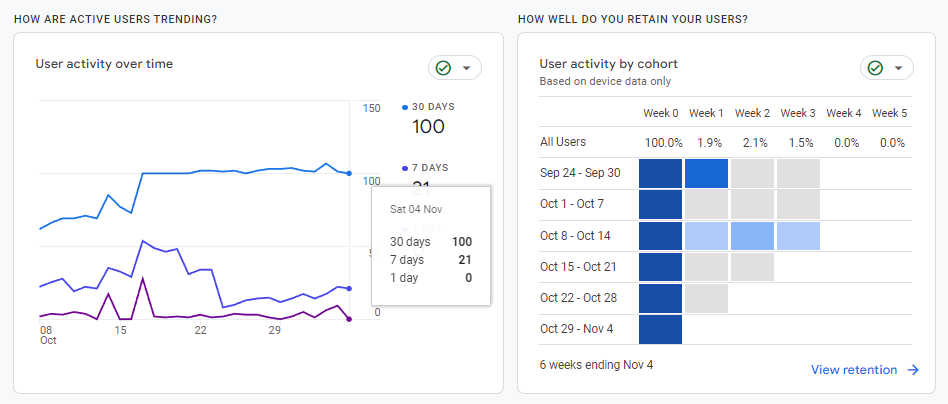
Tracking results in Google Analytics 4.
STEP 10: Optimize your content distribution strategy to get more ROI
Regularly refine your content distribution strategy with a focus on maximizing ROI. Analyze performance data to pinpoint which types of content, channels, and messaging resonate most effectively with your audience.
Additionally, you can implement A/B testing to experiment with different approaches, sharpening your strategy with empirical evidence (e.g., testing headlines, images, CTA, and content formats).
What are the Most Popular Content Distribution Channels?
Referring to the Blogging Wizard research, the most popular content distribution channels are:
- Organic search – 89%,
- Social media – 87%,
- Email marketing – 72%,
- PPC/Paid advertising – 47%,
- External publications – 24%,
- Influencer marketing – 16%,
- Content syndication – 15%,
- Other – 1%.
However, this whole topic is more extensive. We can divide content distribution channels into three main categories: owned channels, earned channels, and paid channels. Drop down below and find out the details.
Owned channels
Examples of owned content marketing channels:
- Company website – Utilize your website as the cornerstone of your content distribution (it’s the ultimate platform you control and can optimize for user experience and SEO);
- Blog – Leverage a blog to provide valuable, SEO-rich content that addresses customer pain points, industry news, and thought leadership;
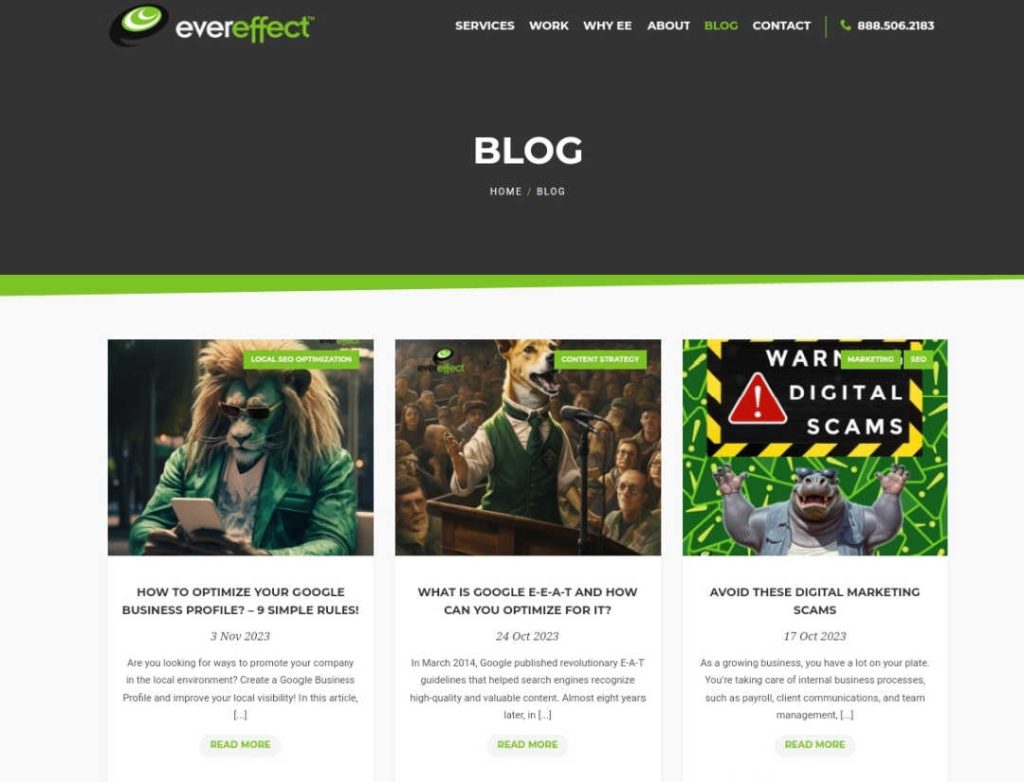
- Email newsletters – Use email newsletters to deliver personalized content directly to your audience’s inbox, allowing segmentation and targeted campaigns;
- Mobile apps – If applicable, distribute content via a branded mobile app to foster direct engagement with your user base;
- Social media accounts – Use your corporate social media profiles to share and promote content, interact with your audience, and gather feedback.
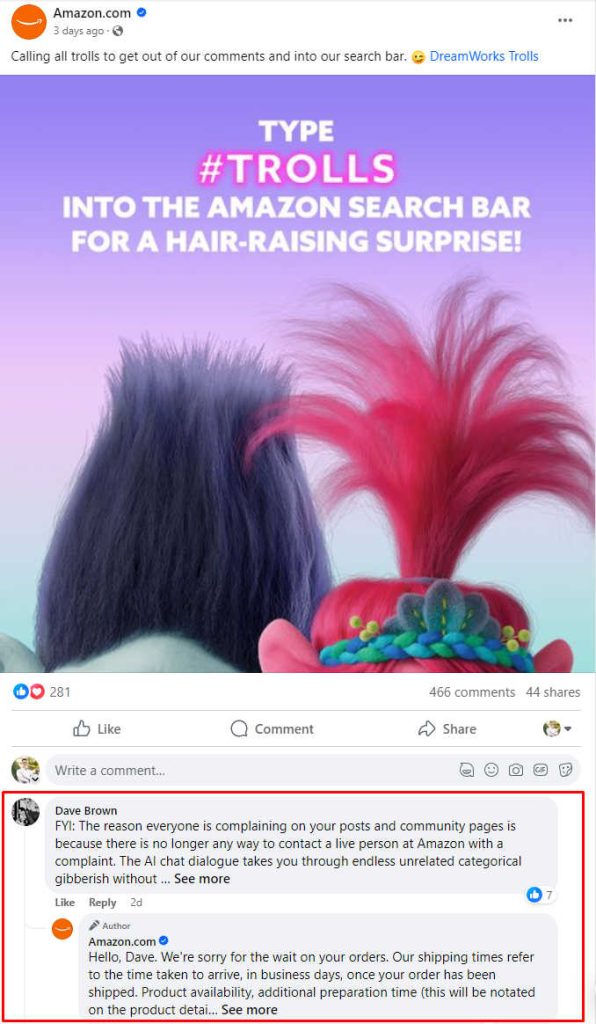
Interacting with Facebook audiences.
- Webinars and virtual events – Host webinars or live events that provide valuable knowledge to attendees while showcasing your brand’s expertise;
- White papers and e-books – Offer in-depth white papers or e-books that can serve as lead magnets, attracting a professional audience looking for comprehensive insights;
- Video channels – Whether on YouTube or a section on your website, create and manage a video channel to present visual and engaging content that can improve user retention and SEO.
Earned channels
Examples of earned content marketing channels:
- Guest articles and blog posts – Contribute valuable insights to external blogs or publications to tap into new audiences and establish authority;
- Influencer partnerships – Collaborate with influencers to expand reach (their endorsement can act as a powerful conduit for content distribution);

Influencer partnership with CR7.
- PR media coverage – Secure media coverage for broader exposure, leveraging journalistic credibility to endorse your brand’s message;
- User-generated content – Encourage and share user-generated content (it’s a testament to audience engagement and adds authenticity to your brand);
- Social shares and mentions – Cultivate content that compels your audience to share and mention it within their networks, thereby amplifying reach organically.
- Industry forums and communities – Engage with industry-specific forums and online communities by providing valuable contributions that can get shared and drive organic traffic back to your site;
- Podcast guest appearances – Secure guest spots on popular podcasts in your niche to reach out to an audience that values audio content;
- Reviews and testimonials – Encourage satisfied customers to leave positive reviews and testimonials on third-party platforms, which can be featured in your content.
Paid channels
Examples of paid content marketing channels:
- Social media ads – Invest in targeted advertising on content distribution platforms like Facebook, LinkedIn, and Instagram to reach specific demographics with precision;
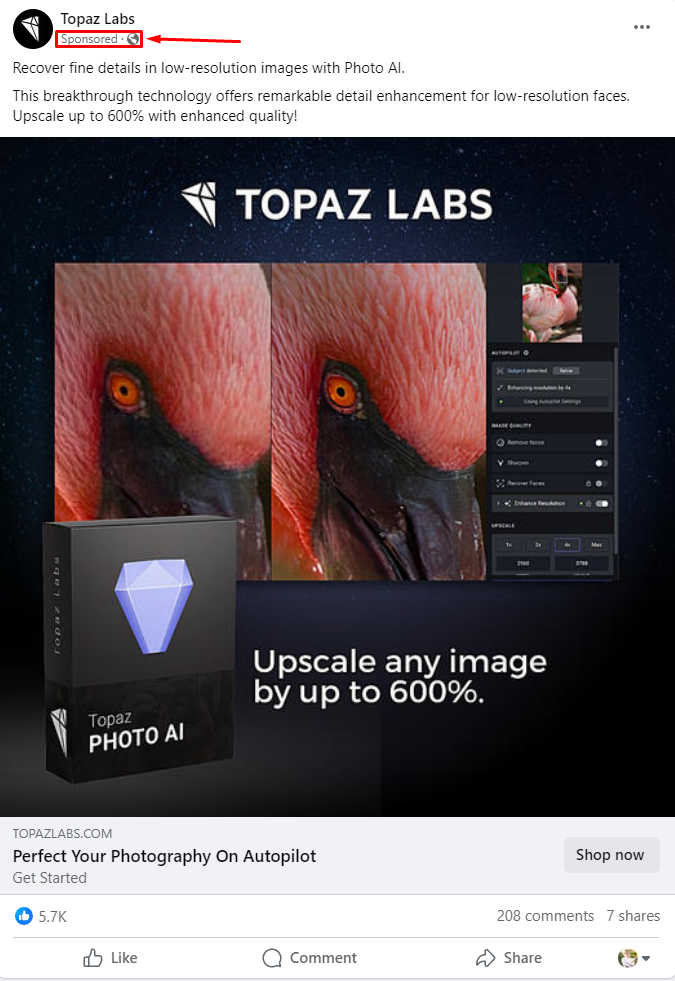
Facebook Ads.
- PPC (Pay-Per-Click) campaigns – Use PPC campaigns to place your content in search engine advertising spaces, paying only when your ad is clicked;
- Sponsored content – Partner with established publications or platforms to feature sponsored content that aligns with their audience’s interests;
- Display ads – Implement display ads on relevant websites to capture the attention of potential customers and drive traffic to your content;
- Influencer sponsored posts – Pay influencers to create or share content introducing your brand to engaged followers, leveraging their credibility.
- Content syndication networks – Utilize platforms that promote your content on other sites where your target audience may be present, such as Outbrain or Taboola;
- Native advertising – Create ads that match the look, feel, and function of the media format where they appear to integrate with a publisher’s content seamlessly;
- Programmatic advertising – Implement programmatic advertising to automate the buying of ads and target your audience more specifically with real-time bidding.
Only 22% of B2C marketers can be identified as abstaining from utilizing paid content distribution channels.
Top Content Distribution Tools & Platforms to Skyrocket Your Efforts!
What are the best content distribution platforms and tools?
HubSpot – content distribution tool for streamlined marketing operations
As you strategize your content distribution, consider HubSpot a formidable ally. This platform functions not merely as a content management system but as an integrated marketing hub.
It empowers you to deploy content across various channels, automate your marketing workflows, and measure the impact through sophisticated analytics. With HubSpot, you can segment your audience, personalize your outreach, and trigger content delivery based on user behavior and preferences.
Leverage its SEO tools to optimize your content for search and its social media suite to schedule and monitor posts across networks, all from a single dashboard. Essentially, it equips you to orchestrate a content symphony that resonates precisely across your audience’s touchpoints.
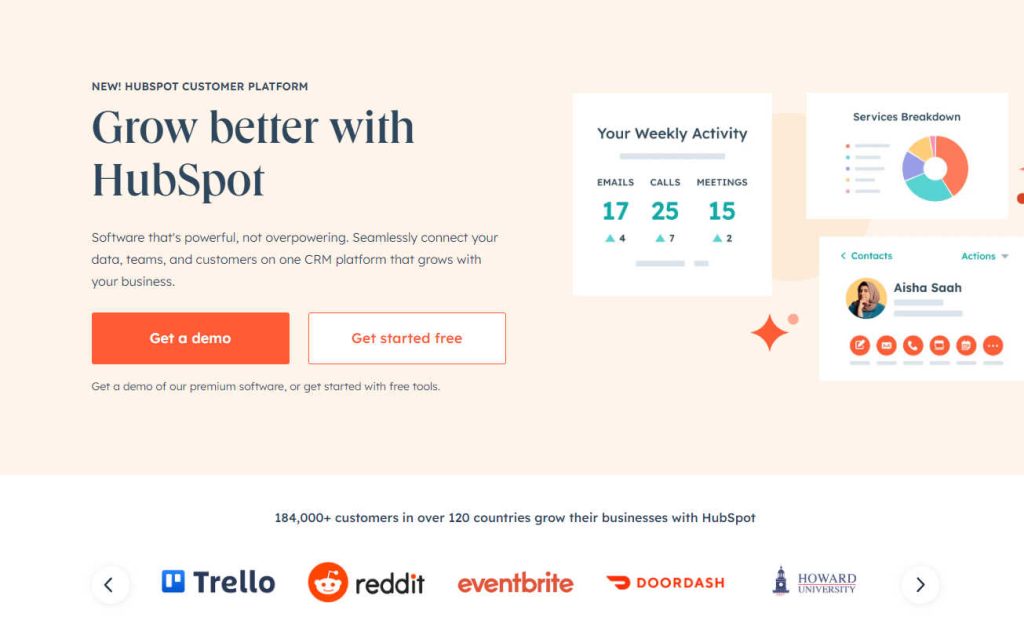
Hubspot content distribution tool.
WiseStamp – content distribution tool for email-centric strategies
WiseStamp operates as a niche tool in your content distribution arsenal, primarily focusing on email signature marketing. This platform enables you to transform every email you send into a content delivery vehicle.
You can embed dynamic content such as the latest blog posts, social icons, or promotional banners within your email signature, ensuring consistent exposure for your content. WiseStamp facilitates the creation of professional and visually engaging signatures with ease, integrating seamlessly with most email clients.
Utilize this tool to ensure every correspondence you initiate concludes with a strategic content nudge, maximizing the real estate of your day-to-day emails.
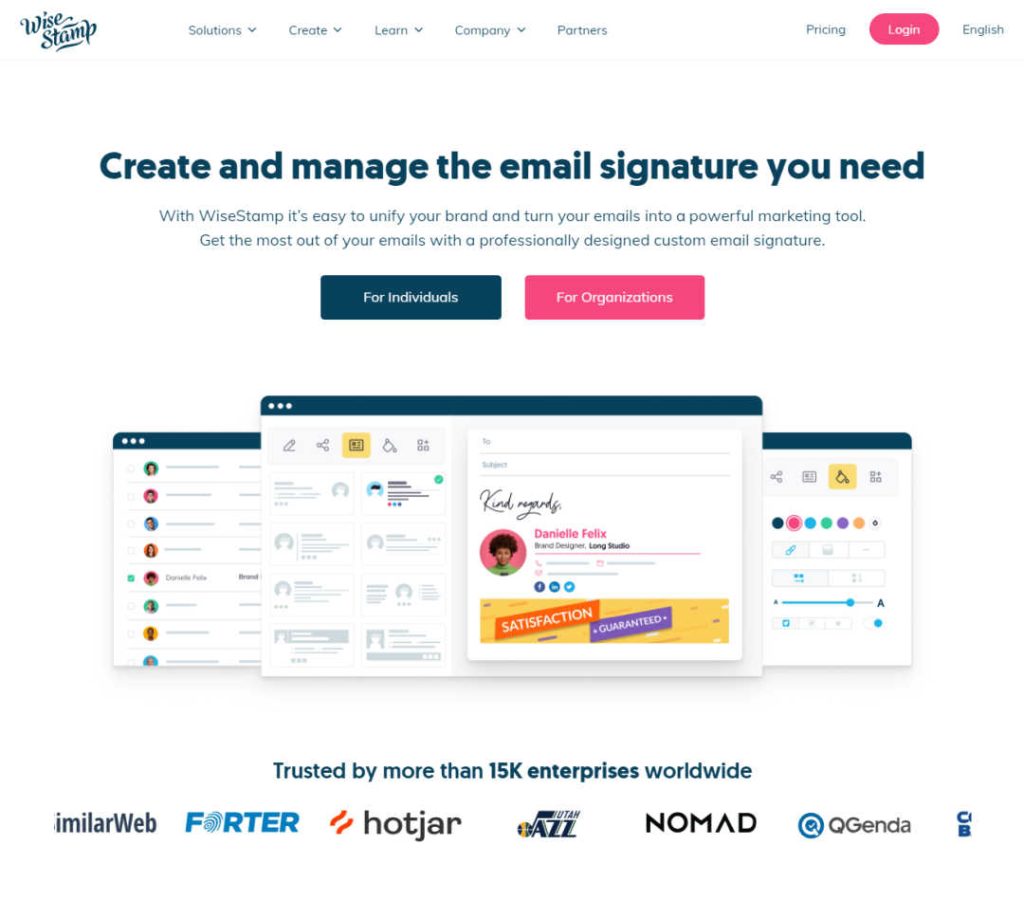
WiseStamp – content distribution tool.
CoSchedule – content distribution tool for synchronized marketing efforts
CoSchedule is an all-in-one marketing calendar that helps you plan, execute, and track your content distribution efforts. This tool excels in organization and collaboration, allowing you to schedule content across various channels, including blogs, email marketing, and social media.
CoSchedule’s strength lies in its ability to give you a holistic view of your marketing schedule, facilitating the alignment of content distribution with marketing campaigns and events. It integrates with WordPress, Google Docs, and various social content distribution platforms, streamlining your workflow.
Utilize CoSchedule to ensure your content hits the market optimally, engages your target audience and is fine-tuned based on performance analytics.
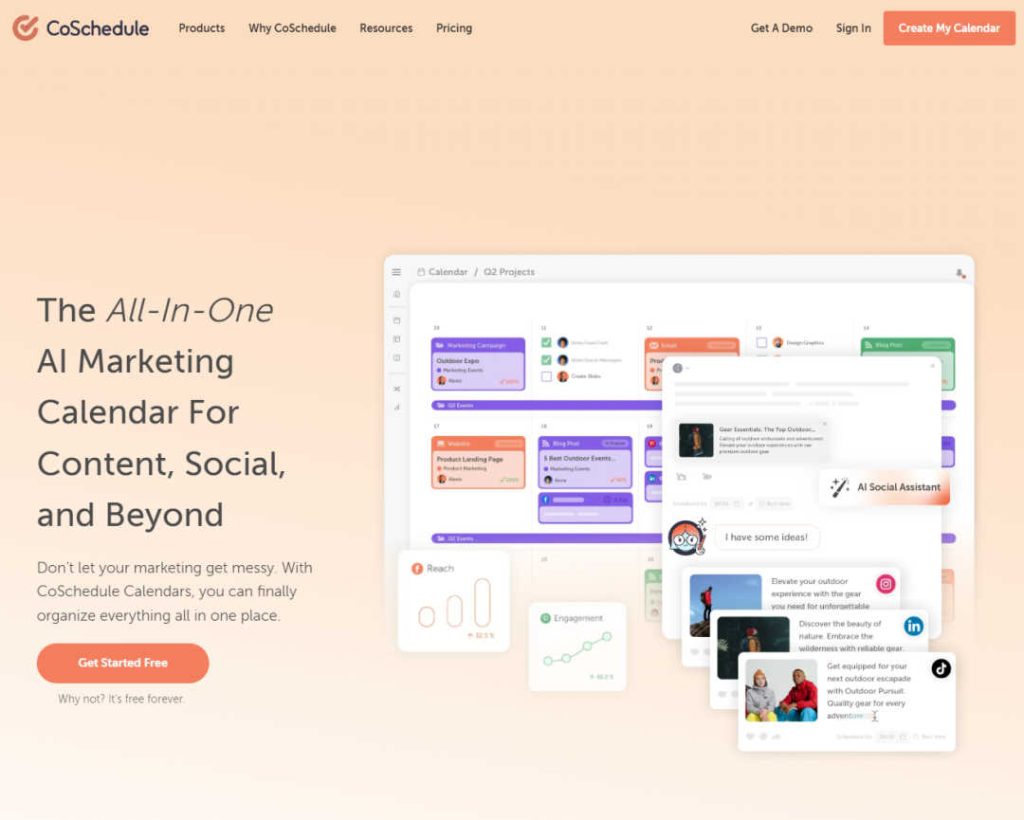
CoSchedule – content distribution tool.
Final Thoughts
By developing a well-thought-out content distribution strategy, you can control the whole content creation process. From now on, you’ll know when to share content and where. Your every marketing move will be precise and accurate.
Do you want help with promoting content? We can give you custom digital marketing strategy solutions based on your brand perception. Schedule a meeting – call us at 888-506-2183.
Content Distribution Strategy – FAQ
What are the most common questions and answers about content distribution strategy?
1. What is a content distribution strategy for creating content for a blog post by leading content creators?
A content distribution strategy for a blog post crafted by leading content creators encompasses a plan to circulate promotional media and post content through organic channels and paid influencer content, aiming to boost referral traffic from multiple platforms. This approach is designed to engage the right audience and achieve higher visibility among search engines and within the business niche of the creators.
2. How can digital marketers choose the proper channels for marketing content to the relevant audience?
Digital marketers can select appropriate channels by analyzing analytics data to understand where their intended audience is most active and receptive. This involves a deep dive into the audience’s behavior across various online content distribution channels, considering the effectiveness of PPC advertising, organic reach, and potential for press mentions, ensuring the marketing content is seen by those most likely to engage with it.
3. How often should companies distribute new content on different channels to stay on the same page with their audience?
The frequency of distributing new content should be informed by a balance between maintaining a consistent presence and the capacity for creating content that adds value. The goal is to keep the audience engaged without overwhelming them. This can be gauged by monitoring referral traffic and engagement through analytics data across the various platforms where the content is shared.
4. What is the difference between owned, earned, and paid distribution channels for digital content in an online platform?
Owned distribution channels are platforms where the company controls the content, such as website pages or blogs. Earned media distribution channels include press mentions and user-generated content that organically circulates without direct payment. Paid distribution involves explicitly paying for visibility, such as through PPC advertising or sponsored influencer-generated content, to reach search engines and the intended audience more effectively.
5. How do I measure the success of my content distribution strategy for an online platform?
Success measurement involves tracking metrics, such as website traffic, engagement, lead generation, and conversion rates, via analytics tools. It also requires a look into the performance of paid initiatives versus organic channels and how effectively the content reaches and resonates with the right audience. The insights gained should guide the continuous refinement of the strategy to enhance visibility and effectiveness across all chosen platforms.
6. What role do content distribution tools play in managing an editorial calendar across multiple platforms?
Content distribution tools are integral to managing an editorial calendar as they facilitate the scheduling and publishing of content across multiple platforms. By using these tools, marketers can automate the distribution efforts of their content creation, ensuring timely posting of blog posts, social media posts, and social media ads. This systematic approach helps maintain a consistent presence on owned media channels, align paid media initiatives, and leverage opportunities for earned media, ultimately maximizing the efficiency and impact of content distribution efforts.
7. In what ways can leveraging different content distribution platforms impact the reach and effectiveness of social media posts and blog posts?
Utilizing various content distribution platforms can significantly amplify the reach and effectiveness of social media posts and blog posts. Each platform has unique attributes and audience demographics, allowing for a diversified strategy targeting specific segments more precisely. For example, social media platforms are ideal for engaging with a broad, interactive audience using visual and dynamic content, while a content distribution platform focusing on professional or industry-specific content can cater to a more niche market. By distributing content strategically across these varied channels, marketers can ensure a broader yet targeted audience engagement and drive more significant results from both their organic and paid media efforts.

